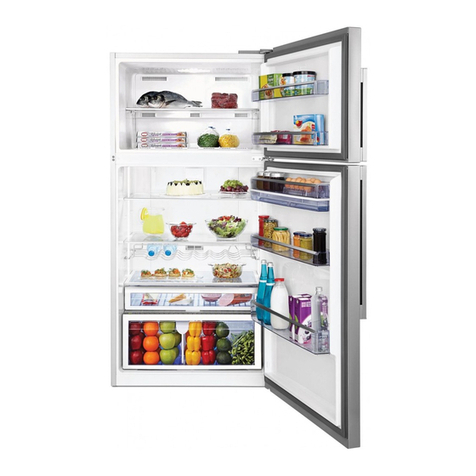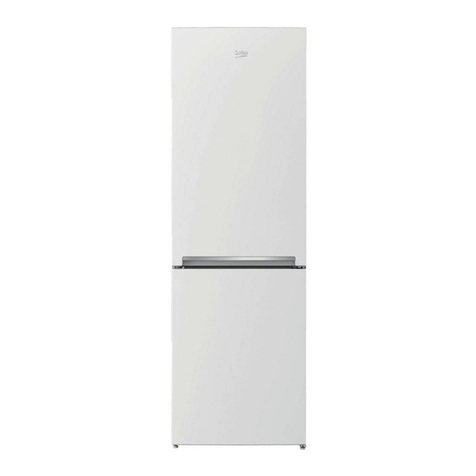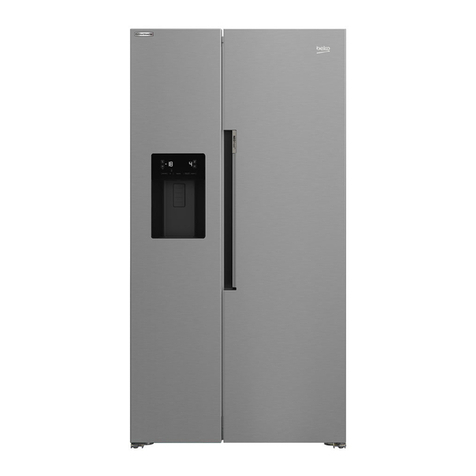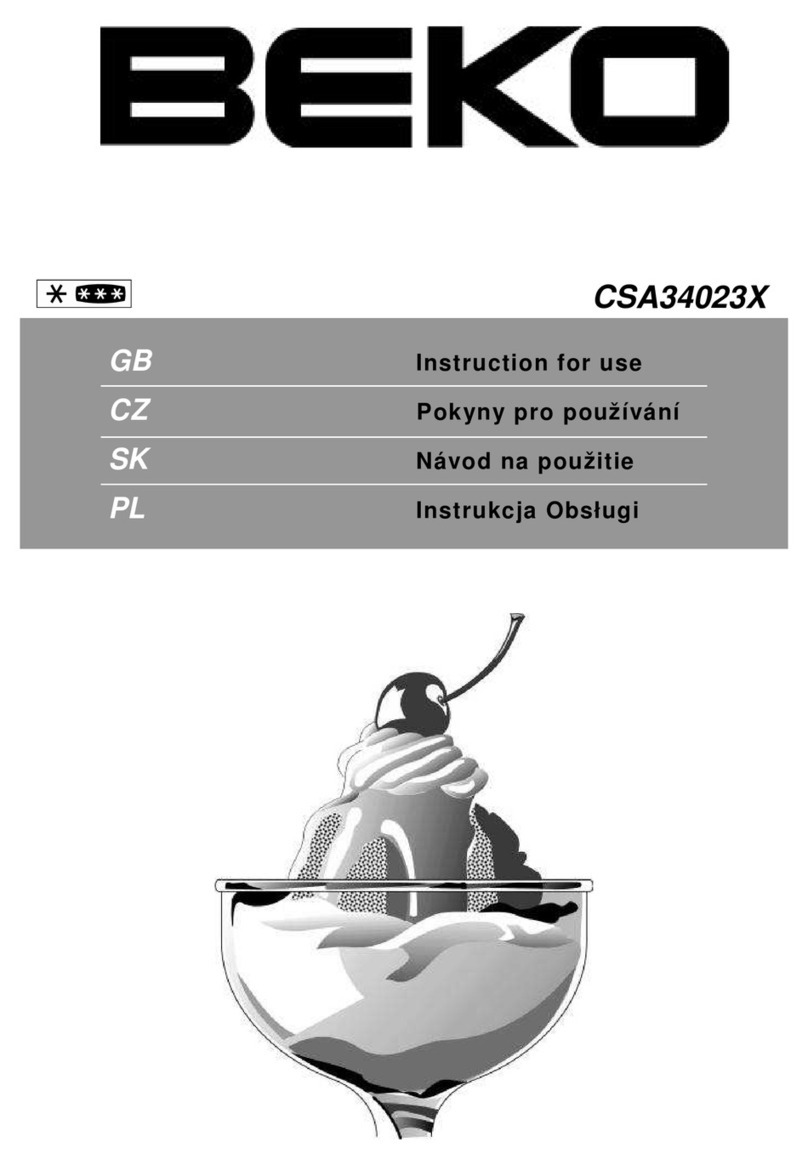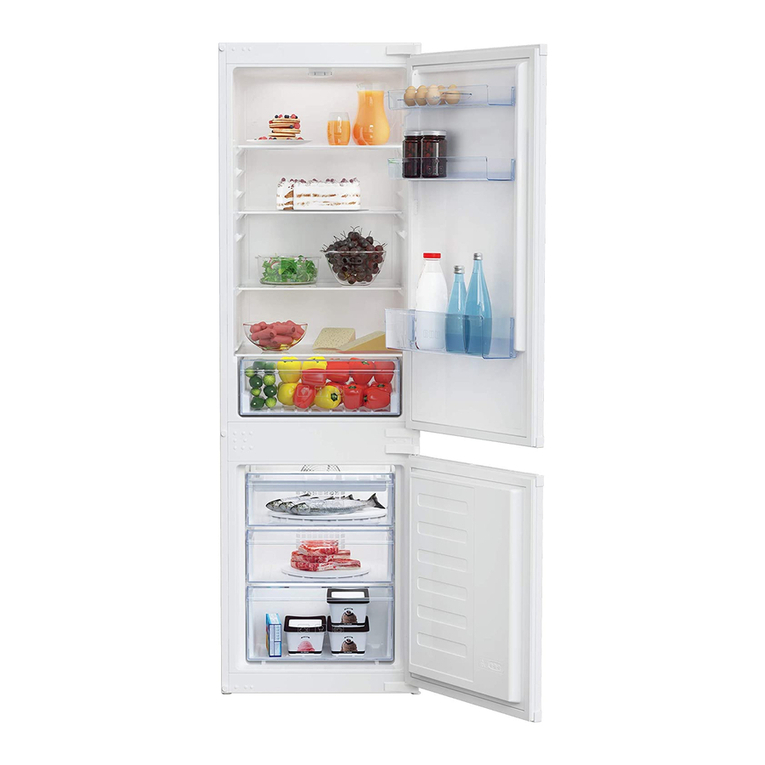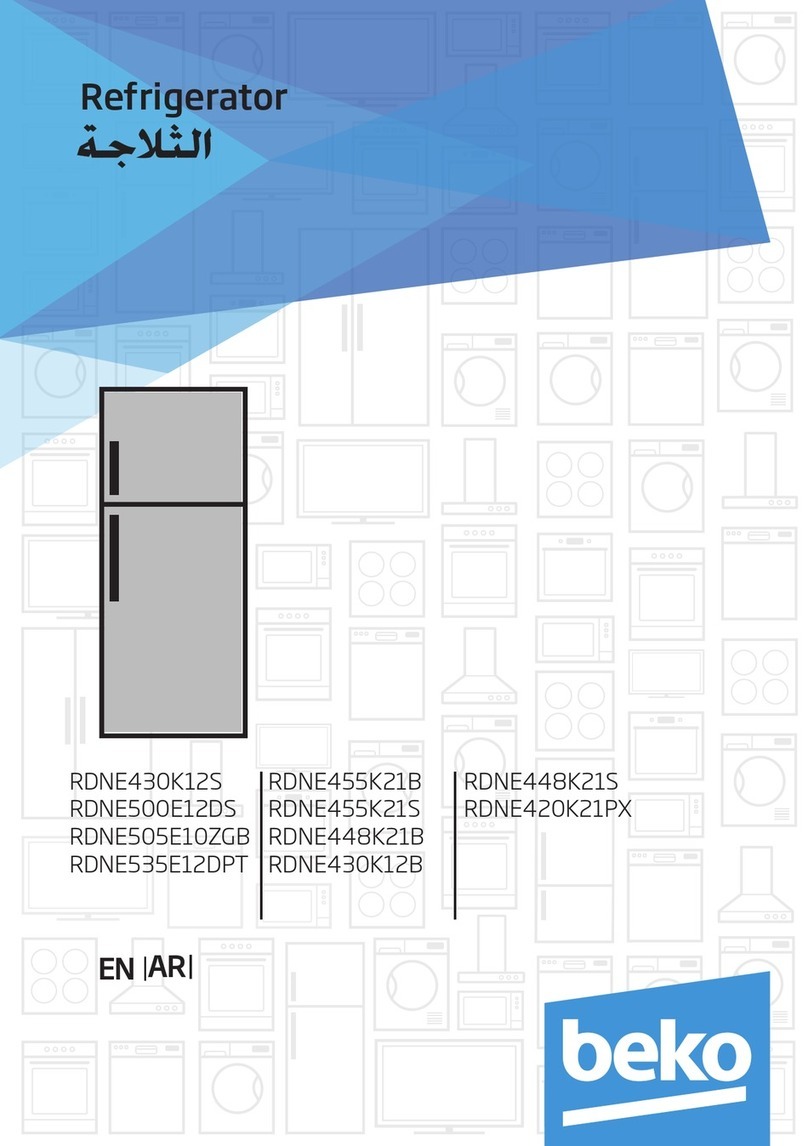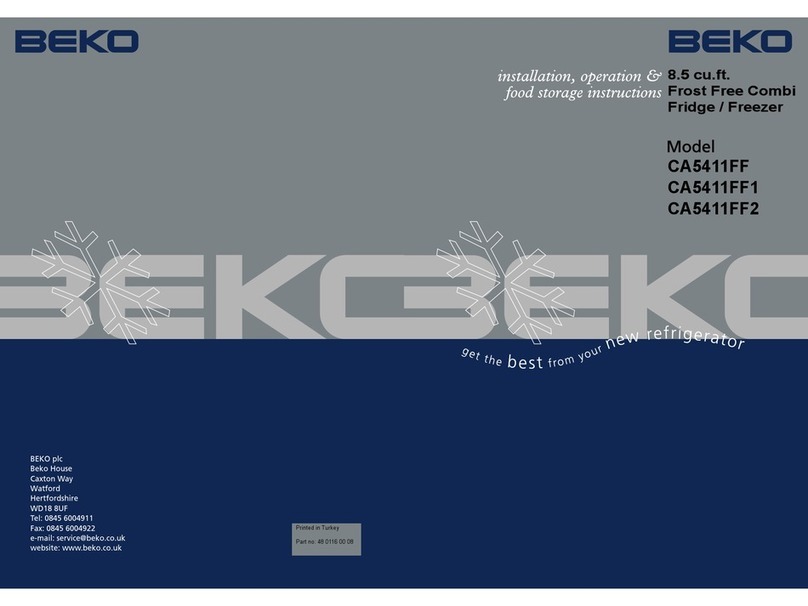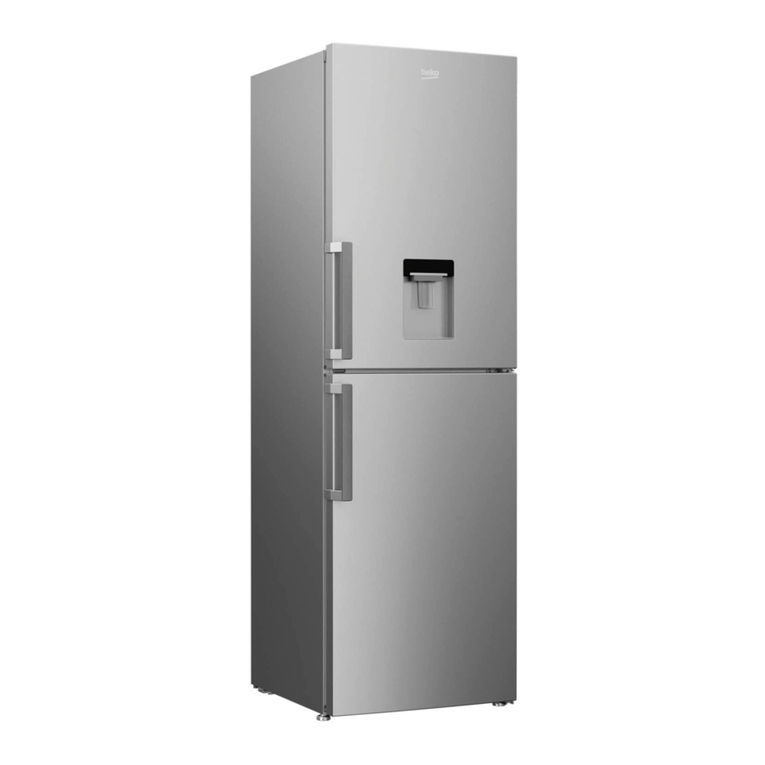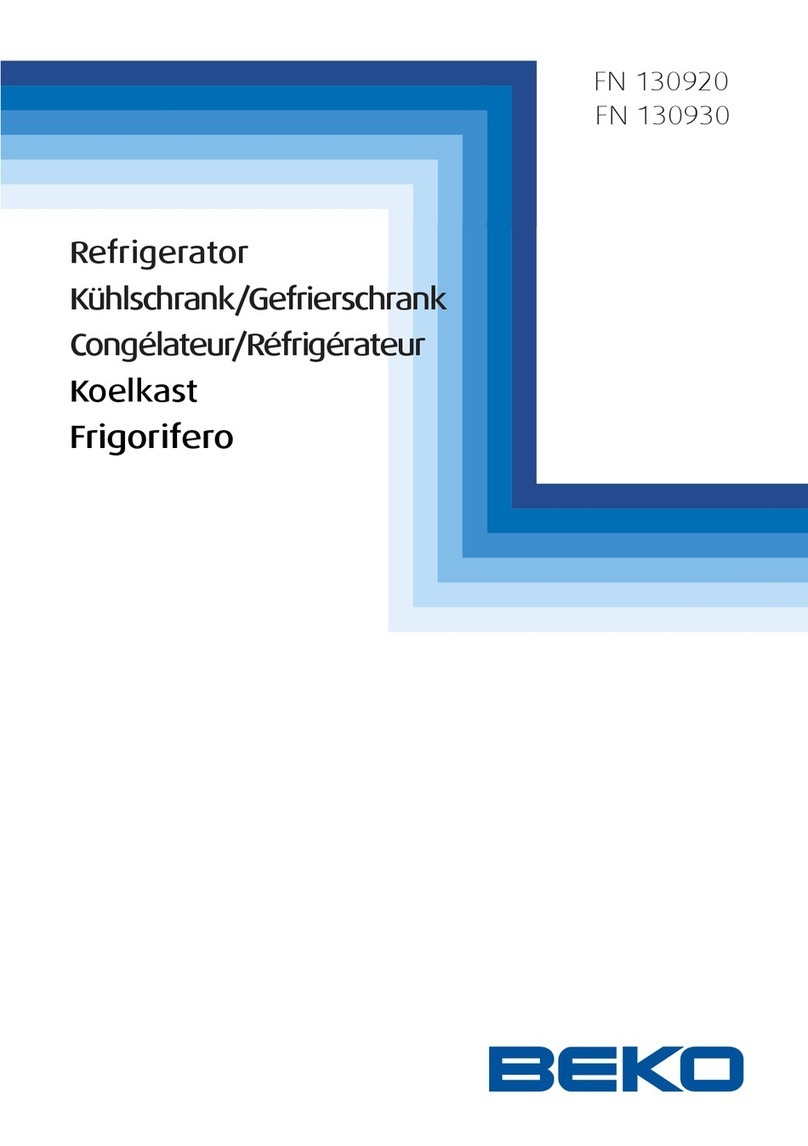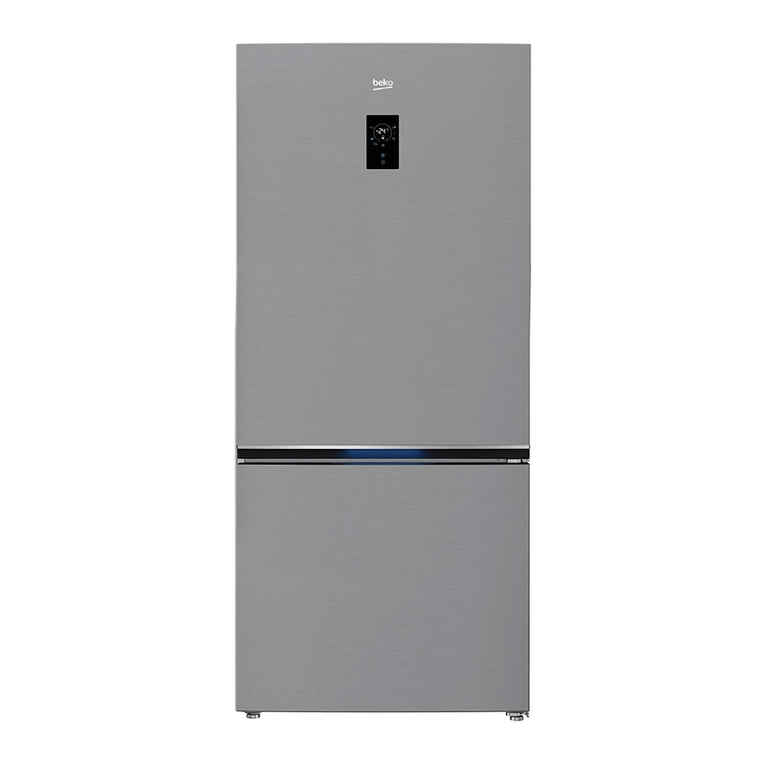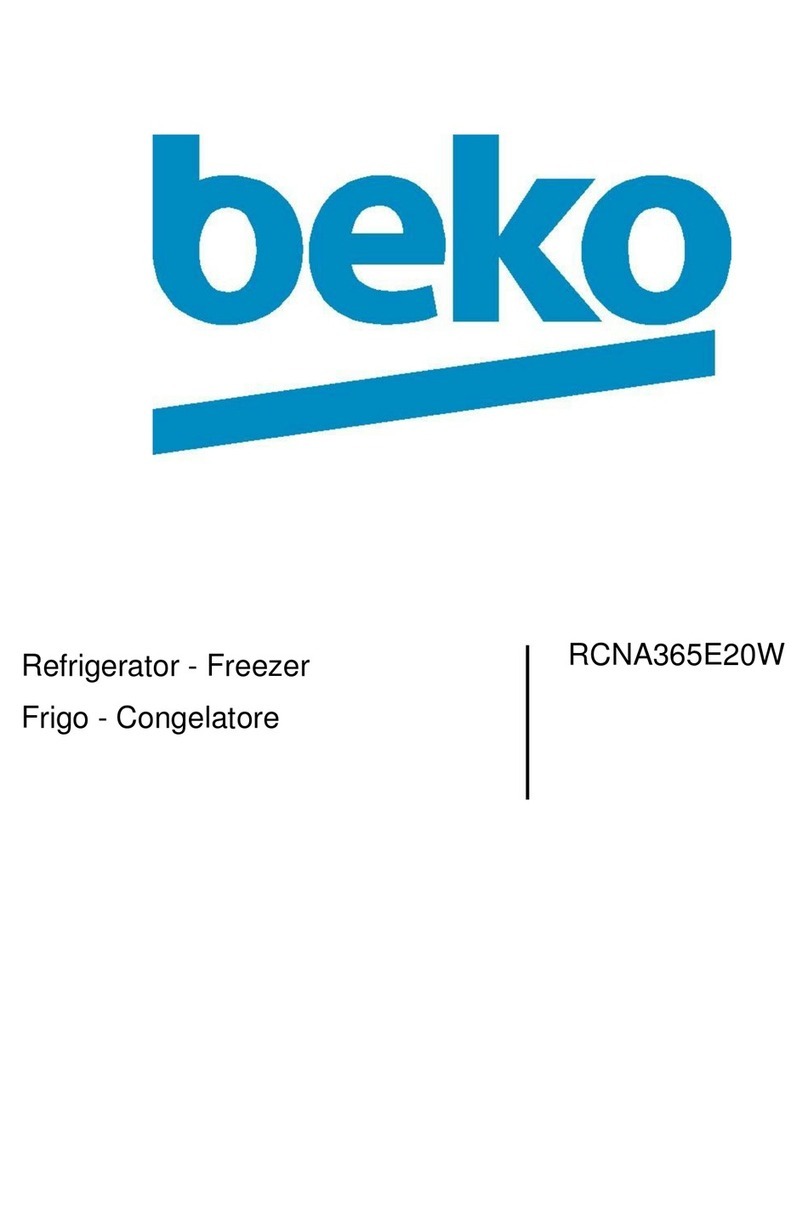
TRANSPORTATION INSTRUCTIONS
1. The appliance should be transported only in an upright position. The packing as
supplied must be intact during transportation.
2. If during the course of transport the appliance has to be transported horizontally, it
must only be laid on its left hand side when standing in the front of the appliance. After
bringing it to upright position,it must not be operated for at least 4 hours to allow the
system to settle.
3. Failure to comply with the above instructions could result in damage to the appliance,
for which the manufacturer will not be held liable.
4. The appliance must be protected against rain, moisture and other atmospheric
influences.
5. When positioning your appliance take care not to damage your flooring, pipes, wall
coverings etc. Do not move the appliance by pulling by the door or handle.
6. Empty any water in the drain tray before moving. See section „Defrosting” and „Care
& Cleaning” for further information.
7. Make sure that the defrost water pipe at the back of the product is fixed to the plastic
evaporating pan on the top of the compressor, to avoid defrost water spillage on the
floor.
Important!
Care must be taken while cleaning/carrying the appliance not to touch the bottom of
the condenser metal wires at the back of the appliance, as this could cause injury to
fingers and hands.
Do not attempt to sit or stand on top of your appliance as it is not designed for such
use. You could injure yourself or damage the appliance.
Make sure that the mains cable is not caught under the appliance during and after
moving, as this could damage the cable.
Do not allow children to play with the appliance or tamper with the controls.
BEKO plc declines to accept any liability should the instructions not be followed.
IMPORTANT! FITTING A DIFFERENT PLUG
As the colours of the wires in the mains
lead of this appliance may not correspond
with the coloured markings identifying the
terminals in your plug proceed as follows:
(See diagram).
1. Co ect the green-yellow or green
(Earth) wire to the terminal in the plug
marked 'E' or with the symbol or coloured
green and yellow or green.
2. Co ect the blue (Neutral) wire to the
terminal in the plug marked 'N' or coloured
black.
3. Co ect the brown (Live) wire to the
terminal in the plug marked 'L' or coloured red.
With alternative plugs a 13 A fuse must be fitted either in the plug or adaptor or
in the main fuse box.
If in doubt contact a qualified electrician.
WARNING: Do not locate extension sockets or charging transformers/power supplies or
Lithium-Iron battery operated products adjacent to the compressor as they could
overheat.




